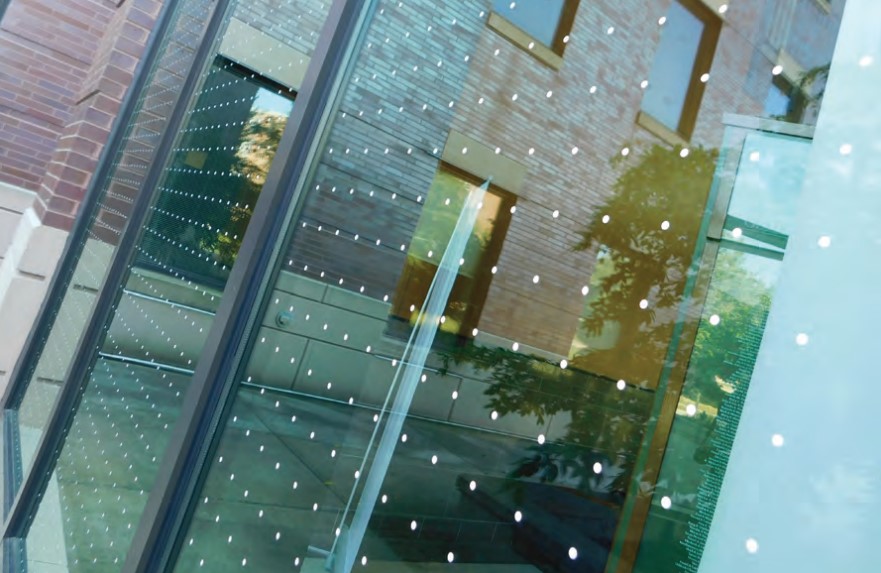Bird strike decals show promising results
Tino Starr / Advance-Titan – Bird strikes decreased 27.5% at the Sage High Avenue entrance and 35% at the Reeve Memorial Union windows.
March 8, 2023
A research project by the Sustainability Institute for Regional Transformations (SIRT) seeking to reduce bird-window collisions on campus saw some promising results last fall.
Last October, hundreds of window decals were placed on the south-facing windows of Sage Hall to break up the reflections that make birds think they can fly through them.
After collecting data during the subsequent migration, Misty McPhee, associate professor of environmental studies and biology and a member of the research team, said preliminary results suggest the decals were successful in deterring bird strikes.
In the past, Sage Hall has contributed most heavily to the number of bird-window collisions out of all buildings on the Oshkosh campus, but after the application of the decals, there was a shift in that role.
“Sage had very few strikes, and Reeve is where we saw most of them, on the big windows on the Horizon side of Reeve,” McPhee said.
Although McPhee noted that it is impossible to make a credible claim with just one season of data, she remains optimistic that this pattern will continue with further data collection.
“We’re going to be collecting data this spring and fall to try to get some more data points to make sure that it actually is a sign that it’s working,” McPhee said. “We are very confident at this point, even though we can’t statistically say it’s working.”
After it is confirmed whether or not the window decals are effective in preventing bird strikes, McPhee said she hopes these decals can be applied to other buildings on campus that frequently experience collisions, such as Reeve Memorial Union, Halsey Science Center, Culver Family Welcome Center and the Student Recreation and Wellness Center.
However, the research team will first have to address some issues that arose during the application of the first window decals to Sage Hall.
“One of the things we have to deal with is the product itself, the stuff we ordered,” McPhee said. “Our facilities crew had a lot of problems with it.”
While putting up the decals, members of UW Oshkosh Facilities Management struggled with the decals, which were difficult to apply and had poorly functioning adhesives.
When they reached out to the company that manufactured the decals, they were not given any worthwhile assistance, nor an admittance that there could be a problem with the manufacturer’s product.
“So, we have to solve that problem, whether it’s finding a new vendor or making that vendor do something that works for us,” McPhee said. “I don’t know what that looks like yet. It’s a very solvable problem, but that’s a problem that has to be solved.”
In the meantime, SIRT will continue to collect data in the spring and fall as they prepare to make more recommendations to the university about how to protect birds on campus.
“Every semester, during migration, we’re just going to keep collecting data, and hopefully over a long period of time, we’ll have a nice long–term data set,” McPhee said.
Students wanting to participate in the research should contact McPhee, who is looking for more students to assist with data collection.
Additionally, anyone who witnesses a bird strike or sees a bird carcass can email with a picture of the bird, information about its location and the date and time at which it was found.














